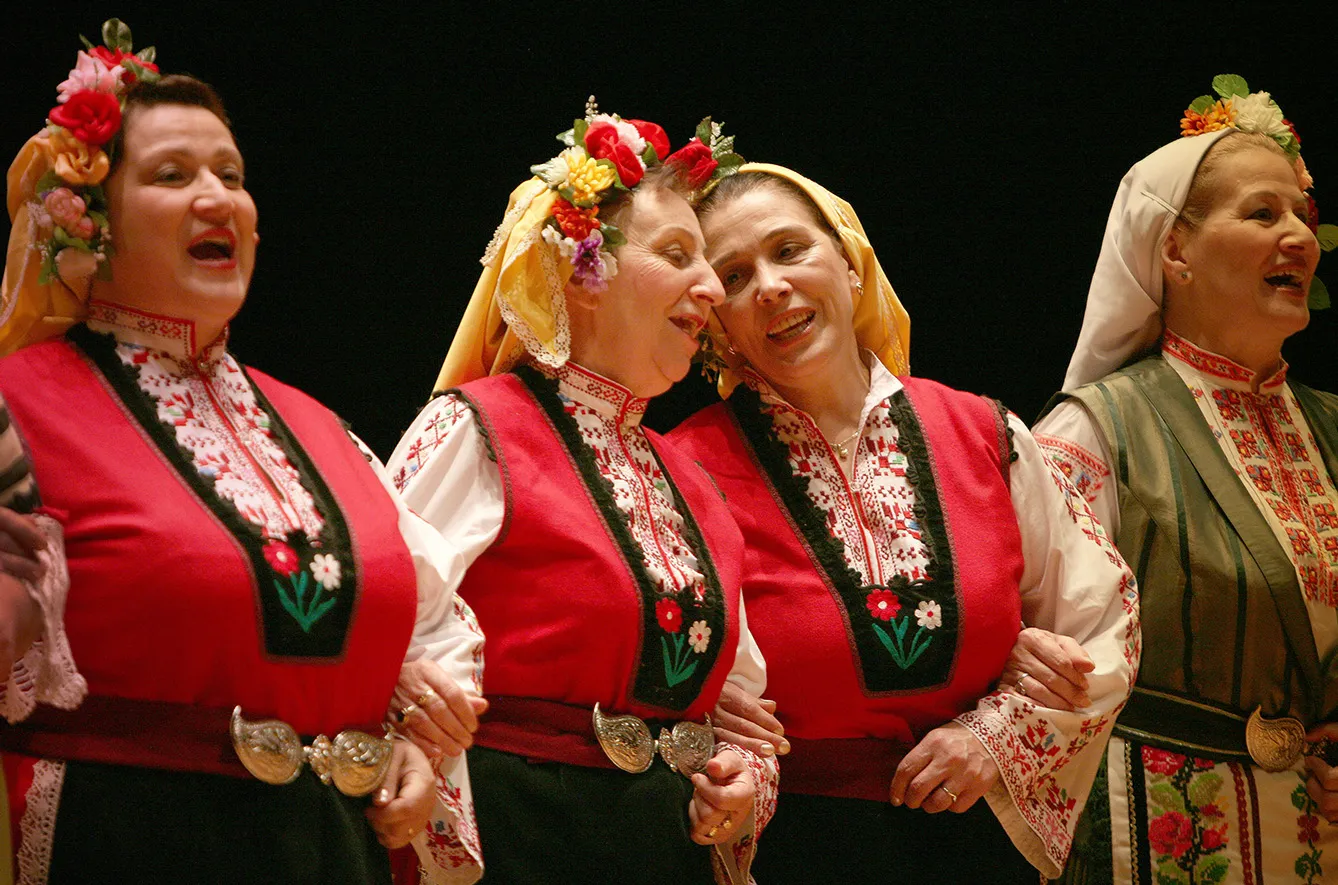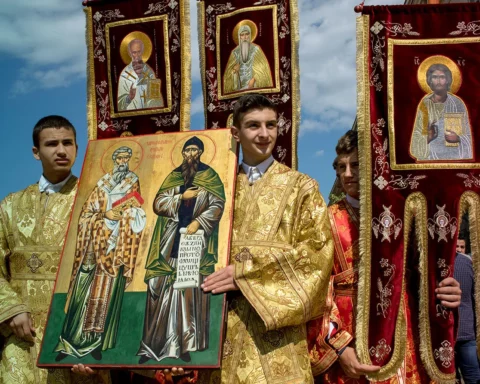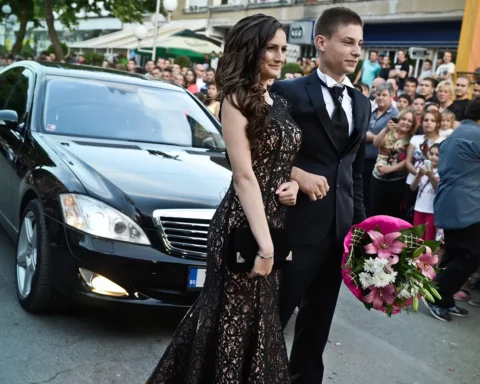In the 1950s, Swiss ethnomusicologist and producer Marcel Cellier traveled to Bulgaria, accompanied by his wife, Catherine. Their timing was perfect. In 1952, a choir, descriptively named the Bulgarian State Television Female Vocal Choir, was set up within the Bulgarian National Radio and tasked with recording authentic folk songs for broadcasting on radio and TV, arranged for multiple voices, a staple of traditional Bulgarian music.
Le Mystere des Voix Bulgares
When Cellier heard the songs performed by the choir, he was “literally astonished,” according to one account. Having committed to popularizing the folk music of Bulgaria, a little-known country on the other side of the Iron Curtain, in 1975, Cellier released the first album with songs performed by the Bulgarian choir. He called the album “Le Mystere des Voix Bulgares” (The Mystery of the Bulgarian Voices). Following the success of the first album, in 1987, Cellier released another album, Volume II, which won a Grammy Award in 1990 for Best Traditional Folk Recording.
But the story continues. Fast forward to today, when “Le Mystere des Voix Bulgares” is still around, not as a bestselling album but as Bulgaria’s premium export when it comes to traditional music. Around the time of that Grammy, the old Bulgarian State Television Female Vocal Choir was officially renamed “Le Mystere des Voix Bulgares.” The female choir, under the direction of conductor Prof. Dora Hristova has been touring the world for thirty years now. Dedicated to popularizing Bulgaria’s musical heritage on stage, the singers have performed some 1,250 concerts all over the world. And counting.
“Our concert halls are always packed. Our choir sounds best a cappella, without sound. It is ensemble-built, florid, and in no case can the microphones reflect this richness of voices because the voices are different. With the microphones, it becomes impersonal,” says in an interview with Bulgarian National Radio Prof. Dora Hristova. “Thirty years ago, we were the sensation of the world. Le Mystere des Voix Bulgares” was spoken of as “the symbol of Bulgaria.” Now young audiences are rediscovering the choir with our concerts around the world,” Prof. Hristova adds.
The sweet sounds of mystery
Bulgaria has an unquestionable distinctive presence in the history of polyphonic, or multi-voice, singing, the local version of which has been popularized abroad by, amongst others, “Le Mystere des Voix Bulgares.” The most recent addition, in 2021, to UNESCO’s Representative List of the Intangible Cultural Heritage of Humanity is the Visoko (High) multipart singing from the mountain villages of Dolen and Satovcha in southwestern Bulgaria.
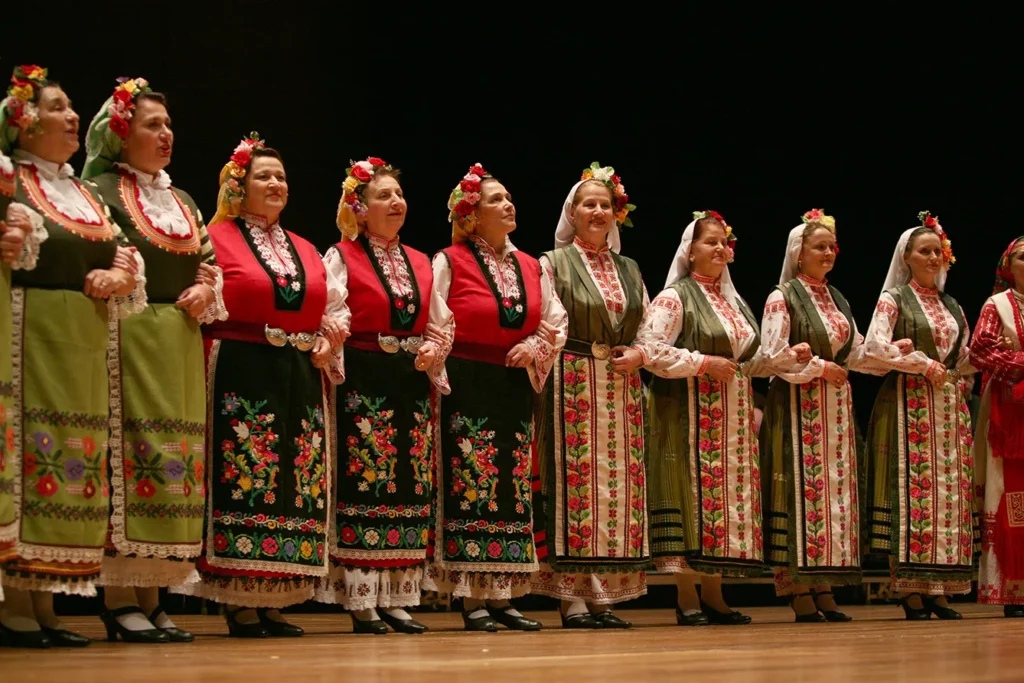
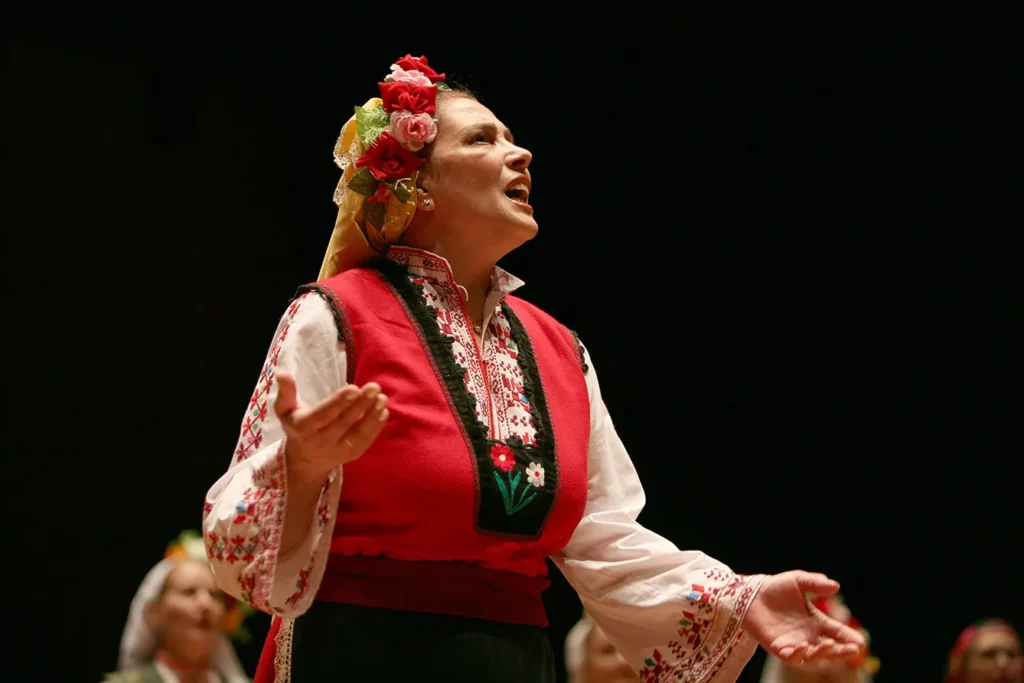
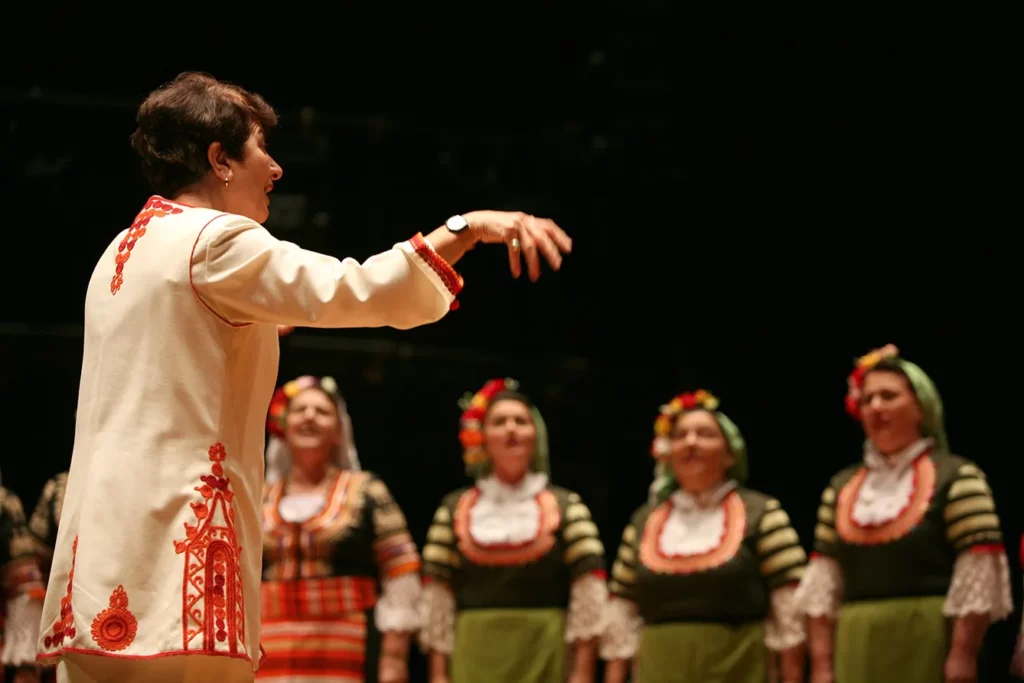
Three types of multipart songs are typical for this Bulgarian singing: low-pitched, high-pitched, and a combination of the two. Typically evoking nature, in the past, visoko songs were sung outdoors by women working in the fields. It is where the uniqueness of this style of singing kicks in. Traditionally, while hoeing or harvesting, a group of women called out Visoko songs from one field, and a second group replied from another. It is this playful musical correspondence of sorts that describes the Visoko singing. The explanation is simple: Because of the amphitheatrical location of the fields and neighborhoods, women had to “outsing” themselves. And just like that, a music phenomenon was born.
“Today, the main performers of Visoko are women and girls in singing groups from community centers in the two villages,” notes UNESCO on its website. Limited knowledge of local singing is something that has marked another Bulgarian entry on the UNESCO Representative List of the Intangible Cultural Heritage of Humanity: The traditional dances and polyphonic singing found in the Shopluk region of Bulgaria, still performed by a group of older women, the Bistritsa Babi (Bistritsa Grannies).
A long and storied tradition
The mostly older women of Bistritsa, a beautiful village near Sofia, are the last link to a musical tradition that is believed to have been around for thousands of years. “This multi-voiceless is quite different from music traditions in the rest of Europe. It is more primitive, and very often neighboring tones are united simultaneously to create an unusual harmony,” reads one AP story from Bistritsa.
In the description of this singing style, UNESCO explains that “diaphony is a specific type of polyphonic singing in which one or two voices build the melody consisting of izvikva meaning “to shout out” and bouche drive meaning “crooked rumbled roars,” while other singers hold a monotone drone that is doubled or trebled to produce a more sonorous sound that accompanies the lead singers.”
The Bistritsa Babi choir is the protector of this brand of polyphonic music in Bulgaria, but as with other once popular singing styles in Bulgaria, today, their performances are largely limited to the stage, be it local or international, not real life.


